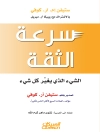The regulatory framework for financial reporting, auditing and governance has changed radically in recent years, as a result of problems identified from the Enron scandal and more recently from the drive to implement global standards. In a key regulatory change, a company audit committee is now expected to play a significant role in agreeing the contents of the financial statements and overseeing the activities of the auditors. Finance Directors, Audit Committee Chairs and Audit Engagement Partners are required to discuss and negotiate financial reporting and auditing issues, a significant process leading to the agreement of the published numbers and disclosures, and to the issuing of the auditor’s report which accompanies them, but which is entirely unobservable by third parties.
Reaching Key Financial Reporting Decisions: How Directors and Auditors Interact is a fascinating, behind-the-scenes examination of this closed process. The authors draw on the results of face to face interviews, and an extensive survey of finance directors, audit committee chairs and audit partners, and present nine company case studies highlighting the process of discussion and negotiation and the methods by which the agreed financial reporting outcome was reached. Detailed analysis of the case studies:
- Allows those involved in the process to benchmark their behaviours against those of others
- Enables a comparison between the previous and current regulatory environments to see what has changed, and sheds light on the sorts of behaviours the current regulatory framework encourages
- Evaluates the effectiveness of the changed regulatory regime, providing evidence relevant to current policy debates concerning the value of audit, IFRS and the relative merit of rules-based versus principles-based accounting standards in relation to professional judgement and compliance
The unprecedented access and unique insights offered by this book make it invaluable for audit firm staff and partners, audit committee chairs and company directors involved in agreeing the published financial statements, as well as those who have an interest in the financial statements, but do not have access to the negotiation process.
Spis treści
List of Figures.
List of Tables.
Foreword (Peter Wyman).
Preface.
Acknowledgements.
Abbreviations.
PART I THE BACKGROUND.
1 Introduction and Background.
1.1 What This Book is About.
1.2 Recent Regulatory Changes.
1.3 Contribution of This Book in the 2010/2011 Regulatory Environment.
1.4 Research Approach.
1.5 Outline of Book.
1.6 Key Findings and Conclusions.
2 Review of Relevant Literature.
2.1 Overview.
2.2 Regulation.
2.3 IFRS.
2.4 Audit Quality.
2.5 Enforcement.
2.6 Corporate Governance and the Role of the Audit Committee.
2.7 Interactions and Negotiation in Non-Audit Settings.
2.8 Interactions and Negotiation in Audit Settings.
3 The Survey.
3.1 Overview.
3.2 Methods.
3.3 Findings.
3.4 Interaction Issues.
3.5 Financial Statement Changes.
3.6 Summary.
PART II THE CASE STUDIES.
4 Case Studies.
4.1 Introduction to the Case Studies.
4.2 How the Case Companies were Selected and Approached.
4.3 Broad Approach to the Grounded Theory Analysis.
4.4 Writing Up Each Case (Matched Set of Interviews) -The Stories.
4.5 Preliminary Within-Case Analysis: Attaching Labels to the Key Categories.
4.6 Within-case Analysis.
4.7 Tabular Summary of Cases.
5 Case 1-Sandpiper plc.
5.1 Background to the Case.
5.2 Corporate Governance.
5.3 Key Interactions Between Stuart, Duncan and Patrick.
5.4 Contextual Factors and Analysis of the Interactions.
5.5 Conclusions.
6 Case 2-Kestrel plc.
6.1 Background to the Case.
6.2 Corporate Governance.
6.3 Key Interactions Between Philip, Guy and Barry.
6.4 Contextual Factors and Analysis of the Interactions.
6.5 Conclusions.
7 Case 3-Mallard plc.
7.1 Background to the Case.
7.2 Corporate Governance.
7.3 Key Interactions Between Jack, Paul and Gerald.
7.4 Contextual Factors and Analysis of the Interactions.
7.5 Conclusions.
8 Case 4-Finch plc.
8.1 Background to the Case.
8.2 Corporate Governance.
8.3 Key Interactions Between Ben, Robert and Damien.
8.4 Contextual Factors and Analysis of the Interactions.
8.5 Conclusions.
9 Case 5-Cormorant plc.
9.1 Background to the Case.
9.2 Corporate Governance.
9.3 Key Interactions Between William, Dave and Simon.
9.4 Contextual Factors and Analysis of the Interactions.
9.5 Conclusions.
10 Case 6-Pochard plc.
10.1 Background to the Case.
10.2 Corporate Governance.
10.3 Key Interactions Between Peter, Alan and Henry.
10.4 Contextual Factors and Analysis of the Interactions.
10.5 Conclusions.
11 Case 7-Woodpecker plc.
11.1 Background to the Case.
11.2 Corporate Governance.
11.3 Key Interactions Between Richard, Horace and Edward.
11.4 Contextual Factors and Analysis of the Interactions.
11.5 Conclusions.
12 Case 8-Raven plc.
12.1 Background to the Case.
12.2 Corporate Governance.
12.3 Key Interactions Between Trevor, Norman and Ivan.
12.4 Contextual Factors and Analysis of the Interactions.
12.5 Conclusions.
13 Case 9-Ostrich plc.
13.1 Background to the Case.
13.2 Corporate Governance.
13.3 Key Interactions Between Matthew, Victor and Luke.
13.4 Contextual Factors and Analysis of the Interactions.
13.5 Conclusions.
PART III CROSS-CASE ANALYSIS AND CONCLUSIONS.
14 Views of Interviewees on the Regulatory Framework.
14.1 Introduction.
14.2 Financial Reporting Issues.
14.3 Auditing Issues.
14.4 Corporate Governance.
14.5 Summary.
15 Attributes and Procedures of the Audit Committee and the Audit Committee Chair: Evidence.
15.1 Overview.
15.2 The Audit Committee.
15.3 The Role of the Audit Committee Chair.
15.4 Issues Discussed at Audit Committee Meetings.
15.5 Conclusions and Contribution to the Academic Literature.
16 Cross-case Analysis and Theory Development.
16.1 Introduction.
16.2 Summary of Interaction Attributes.
16.3 Summary of Cross-case Analysis.
16.4 A Revised Grounded Theory of Financial Reporting Interactions -Overview.
16.5 General Company/Audit Firm Context.
16.6 Specific Context.
16.7 International Regulatory Regime.
16.8 National Regulatory Regime.
16.9 Interactions (Core Category).
16.10 Outcome Determinants.
16.11 Comparison with Extant Literature.
17 Conclusions.
17.1 Overview.
17.2 The Regulatory Setting.
17.3 Evidential Base and Structure of Findings.
17.4 The Nature of Financial Reporting Interactions Between FDs, ACCs and AEPs.
17.5 The Interaction Process.
17.6 Interaction Outcomes.
17.7 The Regulatory Framework.
17.8 The ACC and the Audit Committee.
17.9 Policy Implications.
17.10 Limitations and Implications for Future Research and Regulatory Interest.
References.
Index.
O autorze
Vivien Beattie is Professor of Accounting and Director of Research at the Business School, University of Glasgow. She is a member of the Accounting Standards Board’s Academic Panel, a member of the Accounting Standards Committee at The Institute of Chartered Accountants of Scotland and was a panel member for Accounting and Finance in the 2008 Research Assessment Exercise conducted in the UK. She has published over 100 academic journal articles, research reports, books and professional articles. Her co-authored research book
Behind Closed Doors: What Company Audit is Really About was awarded the prestigious Deloitte/American Accounting Association Wildman Medal in 2007.
Stella Fearnley BA FCA is Professor in Accounting at the University of Bournemouth Business School. Stella spent 16 years with Price Waterhouse and Grant Thornton before becoming an academic. Her research interests cover audit and financial reporting and she has received over £700, 000 funding. She has published over 100 articles in professional and academic journals and national newspapers and is co-author with Vivien Beattie of Behind Closed Doors. Stella was a member of the UK Financial Reporting Council’s Professional Oversight Board from 2004 to 2009 and was an elected member of the ICAEW Council from 1992 to 2004.
Tony Hines MSc FCA is Head of the Department of Accounting and Finance at Portsmouth Business School. He trained with Coopers and Lybrand and became an academic shortly after qualifying as a chartered accountant. Tony’s main research interests are the Financial Reporting Review Panel and the regulation of financial reporting and audit and he has published widely on these issues.












